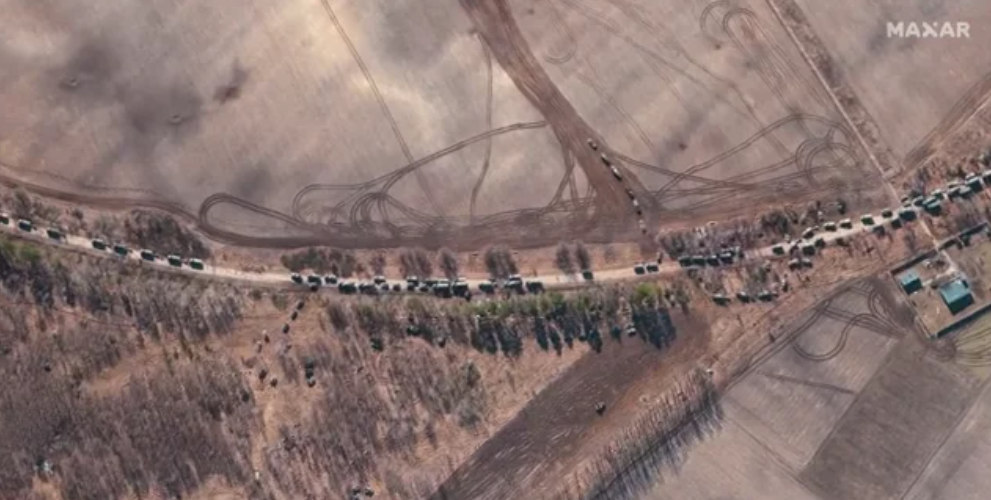
COLORADO SPRINGS—As Russian forces began to substantially build up on the border with Ukraine, the U.S. intelligence community went to commercial satellite imagery providers with a favor to ask.
The intelligence community wanted these companies to “help us rapidly make available imagery” that highlighted this buildup of troops and showed the world what Russia was doing, says Stacey Dixon, principal deputy director of national intelligence in the Office of the Director of National Intelligence.
The dramatic photographs helped drive international pressure on Russia and united countries in support of Ukraine. As the invasion unfolded, companies went ahead and posted more surveillance imagery of Russian movements on their own in an effort that both broadly shared intelligence on the attacks and showed the capabilities that the companies can bring to a military intelligence, surveillance and reconnaissance(ISR) mission.
For U.S. Space Command, the commercial effort also had an effect on its readiness. With private companies focusing on surveillance, SPACECOM’s “exquisite” national assets in space could focus on other missions.
“When that happens, that allows us, in particular U.S. Space Command, to do the things that they’re not doing,” SPACECOM boss Gen. James Dickinson says. “So in other words, we have exquisite capacities … and so the more the commercial industry continues to mature, continues to grow, continues to provide those capabilities, the more I can take my assets to do things that only I can do.”
SPACECOM is looking to expand its collaboration with companies, with the goal of them mitigating capability gaps. The command recently announced a Commercial Integration Strategy to urge industry to provide more services that help specific military missions. The strategy is broken into three efforts:
• Buying off-the-shelf products that can serve command-and-control battle management systems, information technology systems, modeling and simulation systems, space control systems and satellite communication satellites and terminals.
• Using contracts or leases to provide commercial operational intelligence for space domain awareness, SATCOM bandwidth, remote sensing, space control (defensive), modeling and simulation, artificial intelligence (AI) and machine learning, quantum computing and encryption.
• Partner with commercial entities through new ways such as a revised Commercial Integration Cell framework and data-sharing.
Dickinson says the high-resolution imagery provided during the Ukraine invasion is an example of how effective existing private technology is.
“In terms of the commercial imagery that we see on the news everyday … we can all easily see the quality of that, how good it is,” he says. “I think for United States Space Command, I think that’s just a demonstration … [that] those civilian companies that can now provide that level of imagery is really beneficial to not only the broader audience worldwide understanding what’s happening on the ground, but also in terms of how that can augment and supplement what we do in the Department of Defense.”






Comments